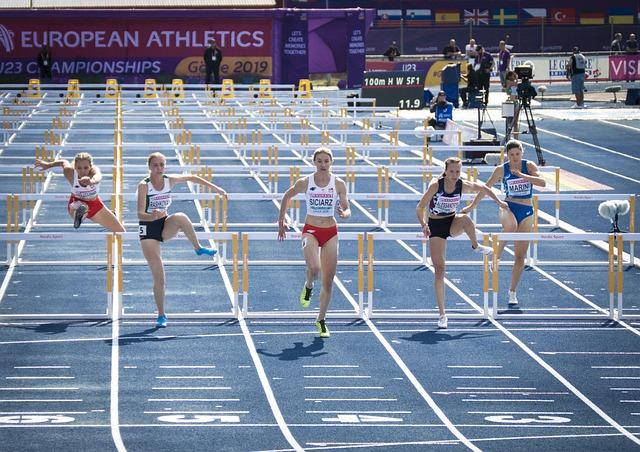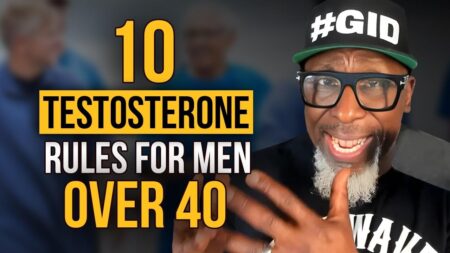The participation of transgender athletes in competitive sports has become one of the most polarizing issues in contemporary athletics, igniting‚ÄĆ passionate debates ‚Ā§across various platforms. With a‚Äć growing number of states and organizations implementing laws and policies that govern the ‚ÄĆeligibility of transgender individuals,the landscape of sports is‚ÄĆ undergoing notable conversion. This article delves into the complexities of these laws, exploring the implications for athletes, sports organizations, and ‚ÄĆpolicymakers alike. By examining different legislative approaches and the rationale behind them, we aim to shed light on a topic that not only challenges our ‚Äćunderstanding of‚Äč gender and ‚ÄĆcompetition but also raises fundamental questions about inclusion, fairness, and the‚Äć integrity of sports.As stakeholders from all sides weigh in, it‚Äôs imperative to navigate this ‚ĀĘevolving discourse with nuance and respect for ‚Ā£the diverse experiences involved.
Understanding ‚Ā£the Legal Landscape‚Äč for Transgender‚Äč Athletes
The legal landscape surrounding transgender athletes is complex and continually evolving, shaped by a myriad of state and federal laws, as well as sports institution policies.‚Ā§ As various entities strive to create inclusive environments, they face the challenge of balancing fairness‚ÄĆ in competition with the rights of individuals to participate in the sports they love. Key considerations in this dialog include:
- State Legislation: Many‚ÄĆ states have enacted laws‚ĀĘ that either‚ÄĆ support or restrict the participation of transgender athletes ‚Ā£in‚Ā§ school sports. Some states implement policies that align with the athleteS gender identity,while others ‚Ā£may have stipulations that effectively limit participation.
- Federal Guidelines: The U.S. Department of Education has signaled that Title IX protections extend ‚Ā£to transgender individuals. This means that schools must not discriminate against ‚Äćstudents based on their gender identity, which complicates how states craft their own laws.
- Sports Organizations: Governing bodies such as‚ĀĘ the NCAA ‚ÄĆand the International Olympic Committee have their own ‚Äčrules regarding transgender participation,which often include hormone therapy ‚ĀĘrequirements and other criteria to ensure a level ‚ĀĘplaying field.
The ongoing debates and legal battles highlight the necessity for a nuanced understanding of how these laws interact. An example of this‚Äč interaction can be seen in the following table,‚Äć outlining some ‚Äčrecent legislative‚Äć actions across various states:
| State | Legislation Type | Impact on Participation |
|---|---|---|
| California | Pro-inclusion | Allows athletes to compete based on gender identity |
| Florida | Restrictive | Limits participation based on biological ‚ĀĘsex at birth |
| Texas | Proactive | Prohibits discrimination based‚Äč on gender identity |
| Alabama | Restrictive | Same as Florida, with potential legal challenges‚Ā§ ongoing |
As‚Ā£ the conversation progresses, it’s crucial for stakeholders, including ‚Äčathletes, ‚ÄĆparents, coaches, and ‚Äćpolicymakers,‚ÄĆ to remain informed and engaged. Understanding these legal intricacies not only empowers individuals but also fosters an surroundings where all athletes can thrive, irrespective of their gender identity.

Evaluating the Impact of State and Federal Laws on Sports Participation
The complex interplay of state and federal laws has‚Äč considerably influenced the landscape of sports participation for transgender athletes. As states enact various policies, the implications for young athletes stretch beyond the playing field, impacting their mental health, social ‚ÄĆintegration, and personal ‚Ā§identity. ‚ÄćWhile ‚Ā£some state legislatures have introduced bills that support the inclusion of transgender athletes, others have passed‚Äč laws that impose strict restrictions, frequently enough sparking heated debates across ‚ĀĘthe nation.
Analyzing these laws reveals‚Äč a stark divide.‚Ā§ In states such as California and Colorado, legislation tends‚Äč to promote inclusivity, allowing transgender athletes to compete in alignment with their gender identity. Conversely, states like Texas and Florida have enacted‚Äč restrictive measures that not only limit participation‚ĀĘ but also raise questions about the fairness of competition. The effects of these laws can‚Ā§ be summarized in‚Ā§ the following points:
- Increased Visibility: Transgender issues have gained significant media attention, influencing public opinion.
- Legal ‚ÄćChallenges: Many‚Äć restrictive‚Ā§ laws face lawsuits, delaying implementation and encouraging further ‚Äčdebate.
- Impact on Youth: ‚Ā§ Transgender athletes may experience increased anxiety and decreased participation due to legislative uncertainty.
To illustrate the different approaches taken across the country, the table below outlines recent ‚Ā£legislation pertaining to transgender athlete participation by state:
| State | Legislation Type | Current Status |
|---|---|---|
| California | Supportive | active |
| Texas | Restrictive | Pending Legal Review |
| Florida | Restrictive | Active |
| New york | Supportive | Active |
This evolving‚Äč legal landscape reflects broader societal attitudes towards gender identity‚Äč and sports culture.As discussions continue, stakeholders across the spectrum‚ÄĒathletes, parents, coaches, and lawmakers‚ÄĒmust navigate‚Äč these changes with‚Äć an ‚ĀĘemphasis on ‚ĀĘequity, prospect, and respect ‚Äčfor individual identities.

promoting Fairness and‚Äč Inclusion: Best Practices for Sports Organizations
In the evolving landscape of sports, organizations are called to advance fairness and inclusion as fundamental values. For many sports entities, implementing policies ‚ÄĆthat ensure equitable participation for transgender‚Äć athletes is crucial. This encompasses understanding various factors, such as physical attributes, gender identity, ‚Ā§and the law, which govern athletes’ rights. Here are some best practices sports organizations ‚Ā£can adopt:
- Develop Inclusive policies: ‚Ā§ Create clear guidelines that explicitly address the inclusion of transgender athletes. This includes defining gender categories, eligibility criteria, and any necessary documentation.
- Engage Stakeholders: Involve athletes, coaches, medical professionals, and legal advisors in the policy-making process to ensure‚Ā£ a complete understanding of‚Ā£ the implications of inclusion.
- Educate‚ĀĘ Members: Conduct regular workshops and‚Ā£ training ‚ÄĆsessions aimed at educating all members about gender diversity‚Ā§ and the importance of inclusion in sports.
- Ensure Openness: Communicate policies and‚ÄĆ any changes clearly ‚ÄĆand openly to athletes and the public to foster trust and understanding.
Furthermore,sports organizations must stay current with evolving legal frameworks surrounding transgender‚Äč participation. Different sports may be governed by separate ‚ĀĘorganizations, each with its ‚Äćown set of rules. To navigate‚Ā§ this complex landscape, organizations ‚Äčshould consider ‚ĀĘcreating a matrix of regulations that highlights:
| League/Organization | Gender Policy | Eligibility Criteria |
|---|---|---|
| International‚Ā§ Olympic Committee | Includes transgender women; must meet testosterone levels | Must declare gender identity for at least 12 months |
| NCAA | Supports transgender inclusion; ‚Ā£specific rules vary by sport | Hormonal treatment required for trans men; must be completed for trans women |
| FIFA | Inclusive policies under review; ‚Ā£consultation ‚Äčongoing | various considerations‚ÄĆ based on gender identity |
By adhering to these best practices, sports organizations not only comply with legal standards but also champion a culture of acceptance and respect. As the discourse around gender ‚Ā£identity continues to evolve, so too must the frameworks that govern sports participation, ‚Ā£ensuring they reflect‚ĀĘ the diversity and richness of all athletes.
navigating Controversies: The Role of‚Äć Policy Makers and Sports ‚Ā§Governing Bodies
In recent years, the participation of transgender athletes‚Äč in organized sports‚Äč has sparked ‚ĀĘsignificant debate ‚Ā§and controversy, necessitating a carefully ‚Ā£coordinated response from both‚ÄĆ policymakers and sports governing bodies. These entities find themselves at a complex‚ÄĆ intersection of equity, legislation, and the evolving understanding of gender identity. Crafting policies that promote inclusivity without compromising fairness ‚ÄĆrequires a nuanced approach that considers the scientific, social, and ethical ‚Ā§implications of participation rules.
Policymakers ‚ĀĘhave been tasked with establishing frameworks that not only uphold the integrity of competitive sports ‚Ā§but also respect the rights ‚ĀĘof ‚Ā§individual ‚Äčathletes.This involves:
- Research and Data Analysis: Collecting data on the impact of inclusive policies‚Ā£ on competitive fairness.
- Stakeholder Consultation: ‚ÄĆEngaging with athletes, coaches, and advocacy groups ‚Ā§to gather a ‚Ā§wide range of perspectives.
- Legal Considerations: Ensuring compliance with anti-discrimination laws and human rights standards.
conversely, sports governing bodies are responsible for interpreting these policies into practical guidelines for competitions. Their role is imperative in determining‚ĀĘ eligibility criteria that balance fairness with inclusivity. ‚ÄčIn this‚Ā§ very way,‚Äć many organizations are now implementing:
| Policy Focus | Implementation Example |
|---|---|
| Hormone Levels | Regulating testosterone levels for transgender women competing in female categories. |
| Transition Periods | Allowing ‚Äća defined ‚Äčtimeframe for hormonal ‚Äćtransition before competition eligibility. |
| inclusive Language | Updating competition rules to reflect gender diversity ‚Äćand respect. |
These measures highlight the ongoing evolution of regulatory frameworks in ‚ÄĆsports, reflecting a‚Ā£ broader societal shift towards inclusivity. As debates continue, the obligation lies with policymakers and sports governing ‚Äćauthorities‚Ā§ to keep the ‚ĀĘdiscourse grounded in fairness and respect ‚ĀĘfor all athletes. Balancing these components is essential‚Äć not just for creating equitable‚ÄĆ sports environments, but also‚ĀĘ for fostering a culture of acceptance and understanding ‚ĀĘin the athletic community.

In Retrospect
the ongoing discourse surrounding transgender athletes and the‚Äč laws that govern their participation in sports reflects a complex interplay of rights, equality, and athletic integrity. As governing bodies continue to navigate the‚Ā£ challenges ‚Ā§of inclusivity while maintaining competitive fairness, the legal landscape remains ‚Äćfluid and contentious. Stakeholders on all sides present‚Ā§ compelling arguments,‚Ā§ highlighting the need for ‚Ā£balanced policies that‚ĀĘ respect both individual identities and the principle of fair competition.
As more states and organizations propose legislation affecting transgender‚ĀĘ athletes, the conversation is likely to evolve, ‚ĀĘdrawing in countless voices from the realms of sports, health, and civil rights. Critics and advocates alike will need to ‚Äčengage in constructive dialogue to foster policies ‚Ā§that honor diversity without compromising the essence of‚Ā£ athletic competition.
The challenge ahead will not only shape the future of sports but also influence broader societal attitudes towards gender identity and equality. As we look to the horizon, it remains imperative for all involved to work collaboratively towards solutions that uphold the values of respect, inclusivity, and fairness for every athlete.





